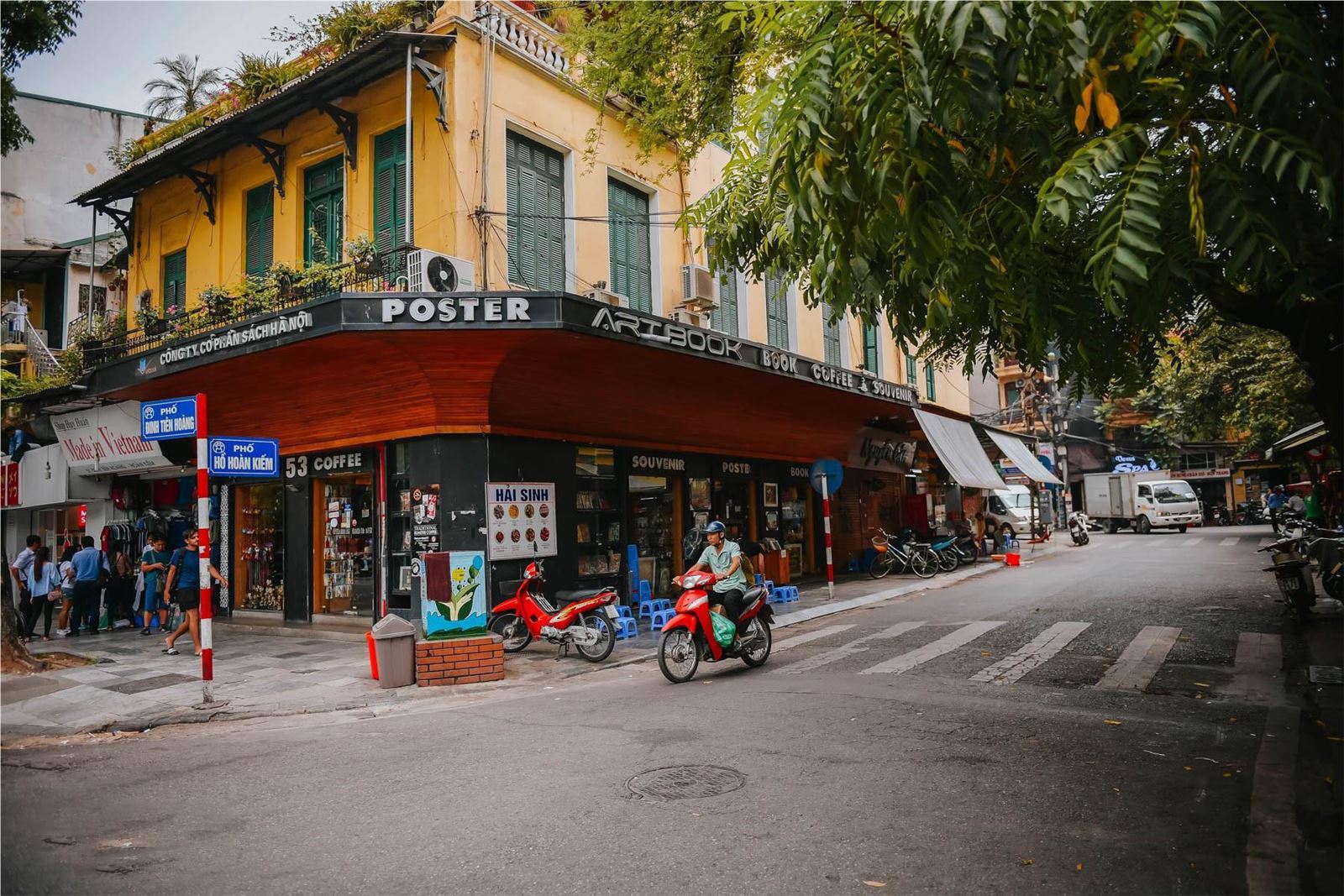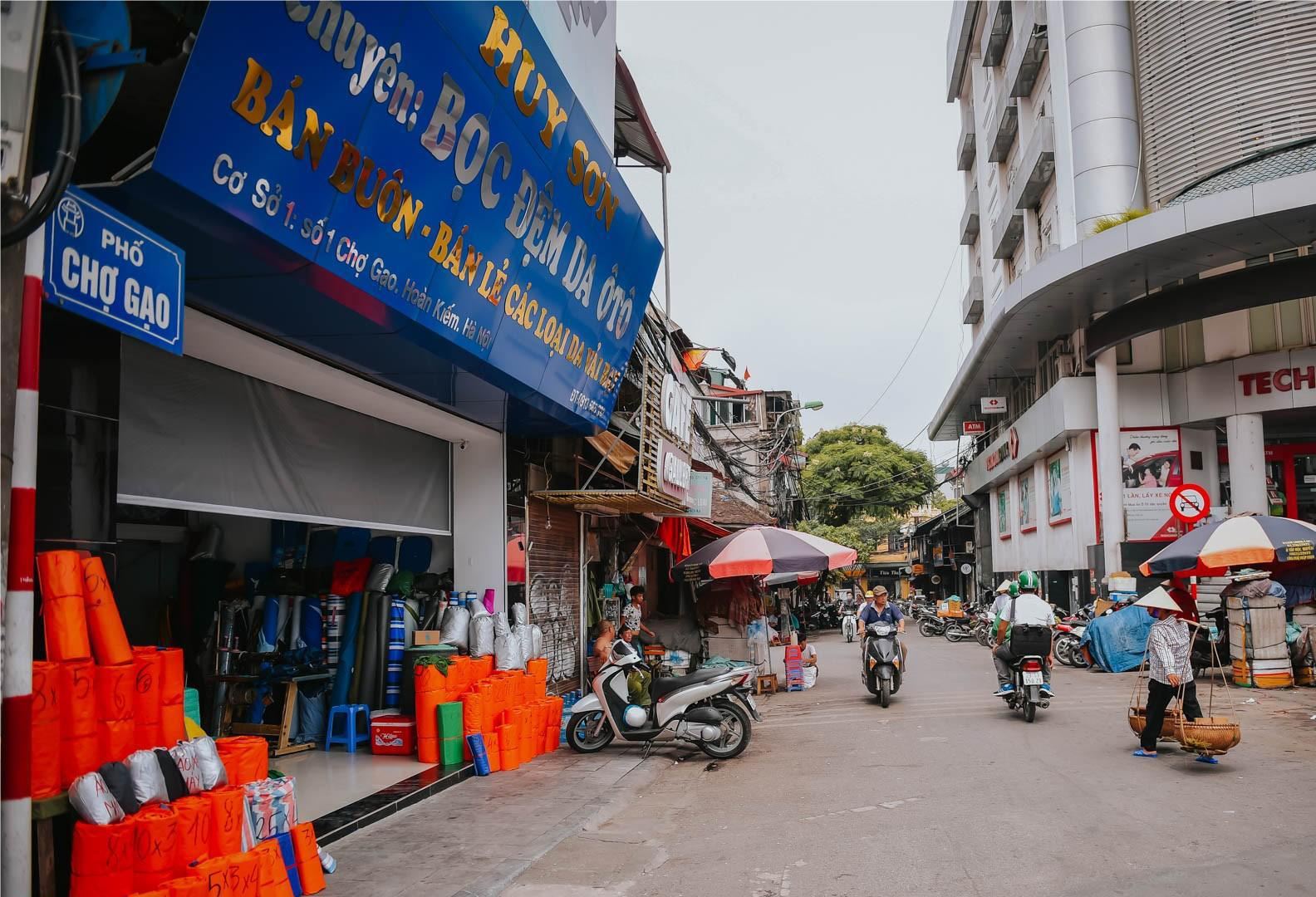Hoan Kiem Lake Street

Photo: Reporter
Hoan Kiem Lake Street is only 52m long, recognized as the shortest street in the capital. Located in the center of the city, connecting Dinh Tien Hoang Street with Cau Go, the favored street with the same name as the historic Sword Lake is only a few tens of meters away.
During the French colonial period, the street was called Rue dela Philharmonique, which translates to "Music Festival". Perhaps it is because around this is the gathering of people's music and culture with the Thang Long Puppet Theater and a place where many artists come and go.
Today, Hoan Kiem Lake Street is most famous for its delicious, crispy beef jerky stuffing. The food is served on colorful plastic plates while the diners sit on rows of tables and chairs on the sidewalk. Sipping traditional snacks while watching the streets of Hanoi is a special experience that is loved by many people in the capital and tourists.
Nguyen Xi Street

Photo: Reporter
Also located in the area along Hoan Kiem Lake, Nguyen Xi Street has the second shortest length in Hanoi. The street connecting Dinh Le and Trang Tien, named after the general under King Le Loi.
Despite being located in the central area of the capital, Nguyen Xi Street has a somewhat quiet appearance with fewer people passing by than the surrounding areas. One can find many small bookstores and a few cafes here, where book lovers come to relax and search for a variety of titles.
Wu Quan Chuong Street

Photo: Reporter
O Quan Chuong Street is nearly 80m long, starting from O Quan Chuong gate to Tran Nhat Duat Street. The small street only has more than ten houses but is associated with one of the most famous historical landmarks in the capital, as well as the only doorway left after hundreds of years of history.
Perhaps, those who have ever loved Hanoi must have heard of five famous doors: O Cau Giay, O Cau Dang, O Cho Dua, O Dong Mark and O Quan Cuong. These are considered the entrances to the earthen citadel surrounding the ancient Thang Long Citadel.
Today, Wu Guan Chuong is the only remaining gate of the capital. Therefore, this relic is carefully restored to preserve the maximum in terms of architecture and become the pride of people living on the small street.
Cho Gao Street

Photo: Reporter
Cho Gao Street consists of two 75m long branches in Hang Buom Ward, Hoan Kiem District. Despite its modest length, this street is always crowded with people because it is one of the trading centers of the old town area.
In the past, this was the place where the To Lich River flowed back to connect with Nhi Ha, there was a famous boat dock. However, later, the section of the river filled by the French colonialists became an empty land. Over hundreds of years of history, the street is still home to many small businesses trading in grain and rice. Perhaps, this is the reason why the street is associated with the name "Rice Market". On the other hand, this area is also surrounded by entertainment and entertainment spots for young people with many restaurants, beer, lemon tea and coffee.
Mai Xuan Thuong Street

Photo: Reporter
Mai Xuan Thuong Street connects Thuy Khue and Phan Dinh Phung, 80m long. Although it has a modest length, this is a shady street and associated with the Mai Xuan Thuong flower garden. Walking along the flower garden, the street also leads to the back gate of the Presidential Palace. Here, people also often encounter a lot of colorful flowers, creating a characteristic beauty of the capital.
In the French era, the street was named Rue Hau Quan Thanh and later renamed Mai Xuan Thuong city - a patriotic soldier who led the anti-French movement at the end of the 19th century in Binh Dinh.
Synthetic Migo